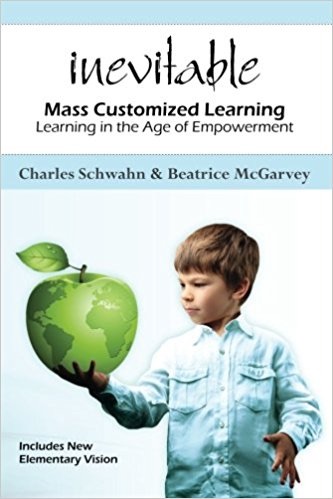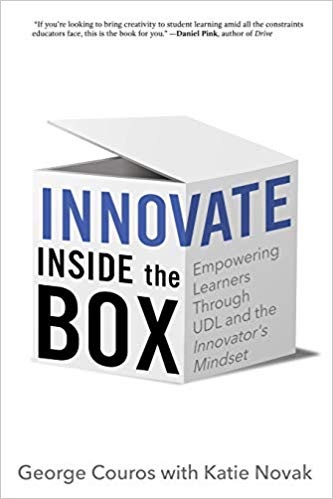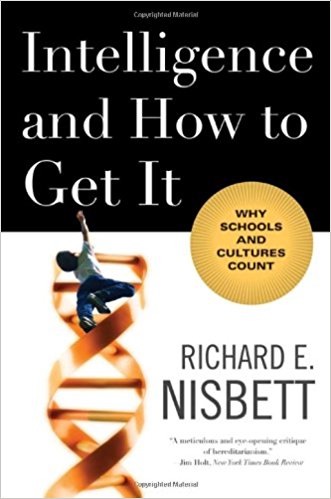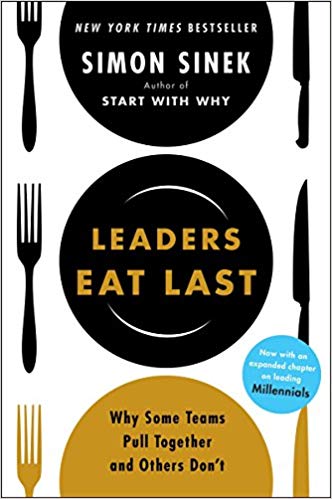Archive for the ‘Book Summaries’ Category
Thursday, September 22nd, 2011
Inevitable: Mass Customized Learning in the Age of Empowerment by Charles Schwahn & Beatrice McGarvey shares an exciting vision for education that uses today’s powerful mass customizing technology to meet the individual learning needs and interests of every learner every day. The goal is to do for learners what Apple does for music lovers, Amazon does for readers, and what Google does for seekers of information. Mass Customized Learning is necessary and doable.
Why This Book Is Necessary
- The world has left the Industrial Age of mass production and entered the Information Age of mass customization, except for education. We still presuppose that all students of the same age are ready to learn the same thing, the same way, in the same amount of time. This explains why people in general don’t think public schools are doing a good job. Technology has transformed nearly every sector of our lives and it should help enable changes toward customized learning. This is not only a book for teachers, but for everyone in the community especially students who will help show us how to do it. The models are available and there is no reason why it should cost more.
Facing Reality
- Schools are bureaucratic monopolies existing in a world of customization and service. What we teach now is not much different from a famous 1892 plan. The model was fine when dropouts could still get good jobs. It’s no longer ok to build in failure for some with a rigid time-driven system for learning. We know that not everyone learns at the same rate, but we plan as if they did. Not quite getting it is cumulative. Don’t ask if a child is ready for Kindergarten (or anything else), ask what is the child ready for.
- Policies and practices are chosen for administrative convenience and are inconsistent with basic learning research. We have expensive extra systems for those who need extra time while our fast runners are held back by the schedule and the curriculum. Averaging grades makes no sense. If someone can demonstrate learning they should move on. If they can’t, they’re just not finished yet. There also needs to be more relevance to the life students are living today and what they will face after school.
- Be sure to assess your agreement with these realities, which the authors admit may be overgeneralized, with the scale on page six. You should also take it again at the end to see if you have changed.
Posted in Book Summaries, Education Books, Leadership Books | Comments Off on Inevitable: Mass Customized Learning in the Age of Empowerment
Friday, June 7th, 2024
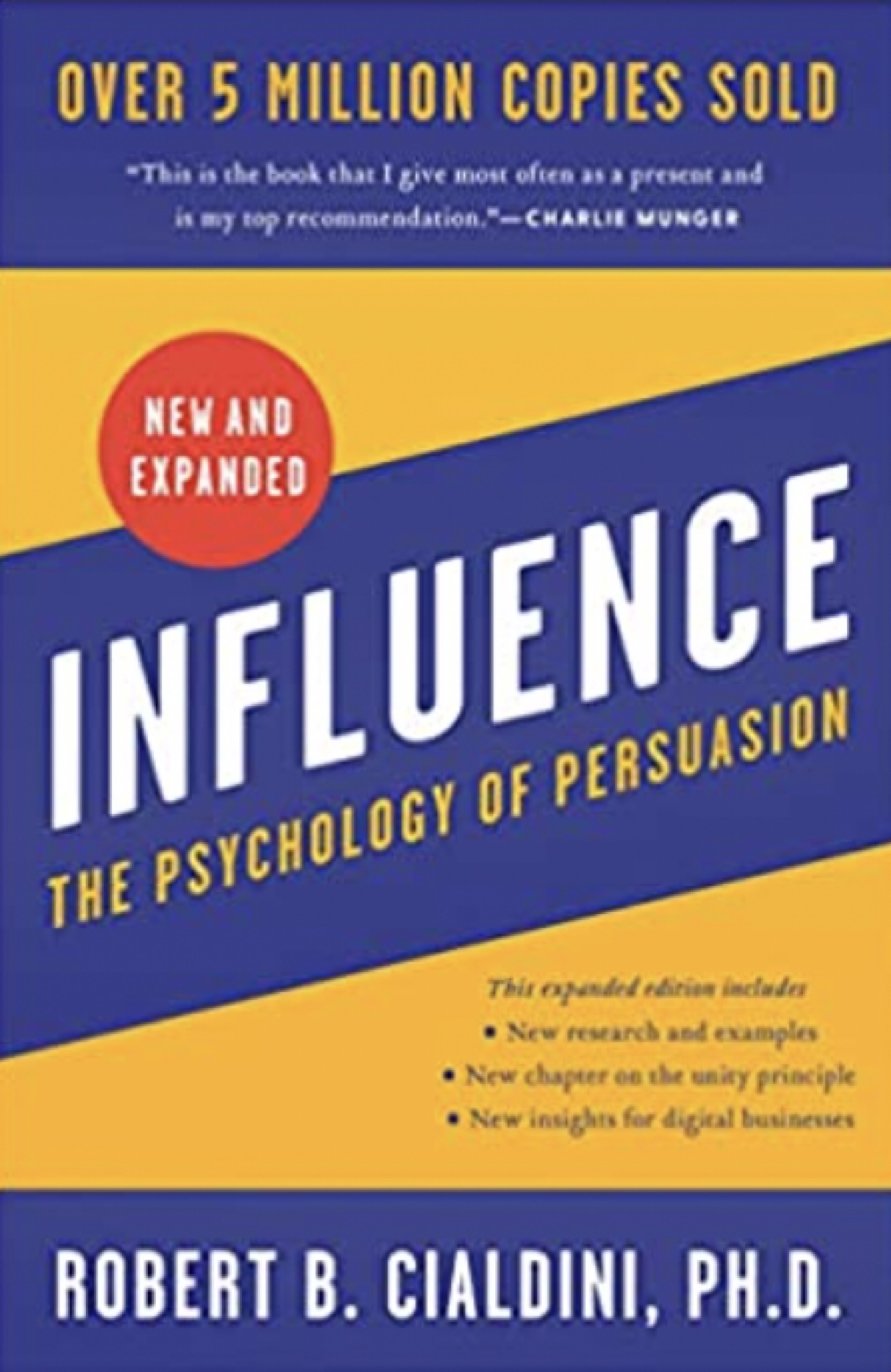
Influence: The Psychology of Persuasion by Robert Cialdini describes the psychological process in people when they say yes and explains how these insights may be applied. While it was written as a business book, it also applies to teaching and everyday life. Be sure to put a copy in your professional development library.
1. Levers of Influence: (Power) Tools of the Trade
- Animals and people both have automatic behaviors that are set off by a single stimulus. For example, turkey mothers will care for an inanimate object if it makes the cheap sound of a baby turkey. Likewise, humans are much more likely to do a favor for a stranger if they are given a reason starting with the word because. Humans also think that expensive things are good as the word cheap is seen as inferior rather than inexpensive. Believing an expert is another automatic behavior. Life is complex and without our automatic rules of thumb, we wouldn’t get much done. It’s important, however, to realize when we have the time and the need to engage in more complex thinking.
- The contrast principle tells us that how we perceive something depends in part on things we have recently perceived. When two hands placed respectively in hot and cold water are moved to room temperature water, the one that was in hot water feels cold and the one that was in cold water feels hot. Also, seeing highly sexually attractive people on TV may make our spouses seem less attractive. There are several other examples here dealing with selling strategies.
2. Reciprocation: The Old Give and Take
- A basic norm of human culture is the obligation to somehow repay a person who gives or does something for you. Such future obligations often lead to continuing relationships. People can use this to their advantage by giving something before asking for something. Politicians do this and they are also easy to buy. So are scientists.
- People can also ask for a more extreme initial concession prior to lowering the ask. This often works a we often see the lesser obligation preferable to the greater one. The trick is to make your first offer just high enough. This usually makes one feel more responsible and satisfied. If someone gives you something for free, be ready for them to ask for something. Consider denying these requests.
3. Liking: The Friendly Thief
- We are more likely to say yes to someone we like. People who want something are therefore likely to do things to increase their likability. Being physically attractive is one way to increase likability. (Doug: This suggests that it’s a good idea to bet fit, well groomed, and well attired. In other words, dress for success.) We are also more likely to like people who are like us. Good salespeople also use this to their advantage. Associating something with someone famous has been shown to work.
- Praise is also used to increase likability. Giving praise to a third party that you know will get back to the person your are praising is effective. You can also use praise to give a person a reputation to live up to. Repeated contact in positive situations helps. Persian curriers knew that baring bad news was risky and even life threatening as the ancient Persians did kill the messenger. In all occasions associate yourself with as many good things as possible and visa versa. We won, they lost. Be alert for situations where you are liking someone more than would be expected. In such cases separate your feelings about the requester from the offer itself.
Posted in Book Summaries, Business Books, Education Books, Leadership Books | Comments Off on Influence: The Psychology of Persuasion by Robert Cialdini
Monday, November 11th, 2019
Innovate Inside the Box: Empowering Learners Through UDL and the Innovator’s Mindset by George Couros with Katie Novak builds on his previous book The Innovator’s Midset. The goal of this book is to help teachers grow so they are more likely to make a difference in their students’ lives. Constraints like red tape, limitations, and lack of funds comprise “The Box” in the title. Innovating in spite of those constraints involves finding another way around problems that limit the impact teachers have on their students.
Introduction: Because a Teacher
- Most of us can remember one or more teachers who made a significant positive difference in our lives. Perhaps other adults have done the same. A goal of this book is to help teachers grow so they are more likely to be that kind of difference-maker. Constraints like red tape, limitations, and lack of funds comprise “The Box” in the title. Innovating in spite of those constraints involves finding another way around problems that limit the impact teachers have on their students.
Part One – The Core of Innovative Teaching and Learning
- 1. Relationships: Research shows that students perform better when teachers prioritize relationship building. Increased social capital leads to higher test scores. Since collaboration builds social capital it also raises scores. This means that relationships between adults are important too. It seems we learn more from someone with whom we have a positive connection.
- Tips for relationship building include: Greeting kids at the door, playing music as they enter, making first interactions positive, calling parents early, flexible planning, allowing students to design the classroom, tapping into to each student’s passion, encouraging students to ask questions to keep them curious, and loving them. Studies with dropouts show that they usually weren’t connected with anyone at school. If a student arrives late just say “I’m glad you are here.”
- 2. Learner-Driven, Evidence-Informed: Learner-driven means that students have a voice in setting learning goals. Evidence-informed means that teachers go beyond grades when they give students feedback. You should be driven by students, not data. Students get lost in the process when teachers are driven by test scores. Beyond grades, evidence can include portfolios, self-assessments, performances, and anything that highlights learning and growth.
- Most of what employers look for cannot be graded. That includes creativity, initiative, critical thinking, and complex problem-solving. Grades can even deter learning. George suggests that you give students feedback without grades. When students are invested in their own goals, they will go beyond the goals the teacher sets for them. Focus on students’ strengths first. If they see weakness as they use their strengths they will be more motivated to work on it.
- 3. Creating Empowered Learning Experiences: Empowerment is about helping students figure out what they can do for themselves. Rather than listening, reading, observing, and consuming they should spend more time speaking, writing, interacting, and creating. Student choice is big here. If students have a voice in what they learn and how they demonstrate that they have learned they will be more motivated. They should be doing writing blogs, video scripts, and podcasts.
- The next big idea is to have students generate questions rather than just give the right answers. The best questions might be those that the teacher can’t answer. We also note that curiosity improves intelligence as it drives the acquisition of knowledge. In essence, our goal is to create self-directed learners. George tells of how he created a student IT department at his school and how another teacher had students be responsible for all aspects of running the school store. In essence, students are the most underused resource in our schools.
- 4. Master Learner, Master Educator: In addition to continuously learning, teachers need to make sure that students know they are learning. For example, if you want students to curate digital portfolios, you should first make one yourself and let them see it. This is learning for your students. Learning about your students should, however, be your first priority. Start with the student who gives you the most trouble and spend time every day in personal conversation. That should improve that student’s behavior, which can improve the entire class.
- Rather than planning every step of the way be ready to adapt. Be sure to tell students to “figure it out” rather than telling them the answers. Students should be finding resources on their own and experiencing the power of teaching the teacher. The teacher and the class are smarter than the teacher alone.
Posted in Book Summaries, Education Books, Leadership Books | Comments Off on Innovate Inside the Box: Empowering Learners Through UDL and the Innovator’s Mindset by George Couros with Katie Novak
Tuesday, March 30th, 2010
In Cynthia Barton Rabe’s outstanding book, she explains how organizations of all kinds and promote Zero-Gravity Thinking in order to solve all kinds of problems. If you want the low down as to how organizations squash innovation, start with my summary then purchase the book. If you want to know how to avoid the needless killing and suppression of innovative thinking, look no farther than these two vital resources.
Click here to see the summary of The Innovation Killer book.
Tags: Cynthia Rabe, Innovation, Renaissance Thinking, Zero-Gravity Thinking
Posted in Book Summaries, Business Books, Leadership Books | Comments Off on Innovation Killer: Are you a Zero-Gravity Thinker? – Cynthia Barton Rabe
Wednesday, April 29th, 2015
Intelligence and How to Get It: Why Schools and Cultures Count ©2009 by Richard Nisbett shows how intelligence is mostly determined by one’s environment and provides concrete things that parents and teachers can do to make kids smarter. He is convinced that intelligence has nothing to do with race and lots to do with hard work. This is a must read for educators and parents alike.
Richard Nisbett
- Richard is a distinguished professor at the University of Michigan. He has written numerous books on intelligence and cultural psychology, and is a member the National Academy of Sciences. If you like this book you might also like The Geography of Thought: How Asians and Westerners Think Differently and Why and Culture of Honor: The Psychology of Violence in the South with Dov Cohen.
10. Raising Your Child’s Intelligence…and Your Own
- Here are Rickard’s tips from the final chapter that you should share with all parents you know. The previous chapters delve into each of these tips and backs them up with research. 1) Talk to your child using high-level vocabulary, and include children in adult conversations. 2) Read to your child and ask questions to look for understanding. 3) Minimize reprimands and maximize comments that will encourage your child to explore the environment. 4) Teach how to categorize objects and events and how to make comparisons among them. 5) Encourage your child to analyze and evaluate interesting aspects of the world. 6) Give your child intellectually stimulating after-school and summertime activities. 7) Steer your child toward peers who will promote intellectual interests. 8) Exercise while you are pregnant and continue exercising into old age. Make sure your children do the same. 9) Brest feed if you can for nine months. More doesn’t seem to help. 10) Model delaying gratification. 11) Teach children that their intelligence is under their control. 12) Praise children for hard work not for being intelligent. 13) Avoid giving rewards for activities that are intrinsically rewarding. Save rewards for things they might not otherwise try. Avoid praise that could make the child feel like they are being evaluated. 14) Do what you can to get the best teachers for your child and avoid rookies. Look for schools that promote cooperative learning.
Posted in Book Summaries, Education Books, Leadership Books | Comments Off on Intelligence and How to Get It: Why Schools and Cultures Count by Richard Nisbett
Thursday, November 3rd, 2011
The Invisible Gorilla: And Other Ways Our Intuitions Deceive Us by Christopher Chabris and Daniel Simons, (©2010, CROWN: New York, NY.) is about six everyday illusions that profoundly influence our lives. They are the illusions of attention, memory, confidence, knowledge, cause, and potential. These are distorted beliefs we hold about our minds that are not just wrong, but wrong in dangerous ways. Once you know about these illusions, you will view the world differently and think about it more clearly. You will recognize when people are taking advantage of illusions in an attempt to obfuscate or persuade. Seeing through these veils will help connect you with reality. I will soon post a summary of Cathy Davidson’s Now You See It which draws heavily on this book.
Tags: Christopher Chabris, Daniel Simons, Invisible Gorilla
Posted in Book Summaries, Business Books, Education Books, Leadership Books | Comments Off on Invisible Gorilla Revised Summary
Tuesday, January 17th, 2012
KINDERGARTEN: Tattle-Tales, Tools, Tactics, Triumphs, and Tasty Treats for Teachers and Parents by Susan Case(©2011, AWOC.Com Publishing: Denton, TX) is full of great advice for educators and parents dealing with this critical age group. If you believe that getting preschool and kindergarten right is important, this book is for you. It has many endearing stories and will give you hundreds of ideas and websites to help with behavior, reading, disabilities, science experiments, and cooking. Click the icon below to purchase a book for yourself and your favorite kindergarten teachers and parents.
Posted in Book Summaries, Education Books | Comments Off on Kindergarten: A book for teachers and parents
Friday, October 18th, 2019
Leaders Eat Last: Why Some Teams Pull Together and Others Don’t by Simon Sinek tells stories about leaders who found success mainly by putting people first. Seeking short term gains and seeking to serve one’s own selfish interests is short-sighted and sure to fail over time. This book will help leaders in all fields be the type of leader they wish they had. This would be a great textbook for any leadership course. Be sure to get a copy for leaders you know.
Forward by George J. Flynn Lieutenant General, U.S. Marine Corps (Ret.)
- An organization’s success or failure is based on leadership excellence and not managerial acumen. These organizations have strong cultures and shared values and understand the importance of teamwork and trust. They understanding the importance of people and relationships. The true price of leadership is the willingness to place the needs of others above your own. You must know your people and realize that they are much more than an expendable resource. Good leaders truly care. Leaders who take care of their people can never fail.
Part 1 – Our Need to Feel Safe
- 1. Protection from Above: We start with a story about a pilot risking his life to save 22 men in Afghanistan. He said he was just doing his job and that empathy for others is the single greatest asset he had to do his job. “They would have done it for me.” Empathy helps you share your glory and help those with whom you work to succeed. This strong foundation leads to success that no amount of money, fame, or awards can buy. Exceptional organizations have cultures in which leaders provide cover from above and the people on the ground look out for each other thanks to empathy.
- 2.Employees Are People Too: By getting rid of time clocks, bells that signaled breaks and lunch, locks on boxes of spare parts, and replacing free anytime phones with asking for permission payphones one leader used trust to turn his company around. People offered to donate vacation days to an employee with family problems. The workers also took better care of the machines. This happens when leaders listen and avoid coercion. They treat workers like family and realize that everyone is someone’s son or daughter.
- 3. Belonging: The authors use the metaphor of The Circle of Safety. It’s like four oxen standing so that no matter which direction the lion comes from it will always be met be horns. After thirteen weeks of boot camp, Marines know that they can trust every other Marine to protect them. It’s important that everyone in an organization feel that way about every other member so that everyone feels as safe as possible. This will result in better collaboration and problem-solving.
- 4. Yeah, but…: Stress can have negative effects on one’s health so it’s important to avoid it as much as possible. The more control a person has the less likely they are to be stressed. Top leaders, therefore, do what they can to give workers control and to acknowledge their efforts. We also know that coming home angry from a job you hate will have a negative impact on your children. You may be better off with no job rather than one you hate.
Part 2 – Powerful forces
- 5. When Enough Was Enough: In order to survive, humans have had to rely on cooperation and mutual aid rather than competition. If we don’t look out for our group, our group won’t look out for us. Conversely, if we don’t take care of ourselves first, we won’t be of much use to others.
- 6. E.D.S.O: Four brain chemicals help us survive. Endorphins are the brain’s pain relievers. They give us a remarkable capacity for physical endurance. Dopamine causes a feeling of satisfaction when we accomplish something. It makes us a goal-oriented species. Together these two chemicals help us get things done. Serotonin gives us the feeling of pride we get when we perceive that others like or respect us. As social animals we need approval. This causes us to give of our selves. Oxytocin is the feeling of friendship, love, or deep trust. Without it, there would be no empathy. You get it when to do something nice for someone. Such behaviors make us happy and help us live longer.
- 7. The Big C: When something goes wrong or you don’t feel safe your body releases cortisol. It’s the chemical that causes feelings of anxiety, discomfort, or stress. It’s like an early warning system. If you work with a group where members don’t care much about one another’s fate cortisol starts to seep through your veins. It inhibits the release of oxytocin, the empathy chemical. One can adapt to regular doses of cortisol, but it isn’t good for one’s health. Here is a story of a company that adopted a no-fire policy. As a result, people communicated more openly and pointed out problems more quickly. Turnover shrank and people felt safe.
Part 3 – Reality
- 9. The Courage to Do the Right Thing: Here we have a story of an aircraft controller who broke the rules and saved many lives. The point is that you have to know when to break rules and that you need rules to keep things running well. Also, relationships aren’t really based on rules.
- 10. Snowmobile in the Desert: Snowmobiles don’t run so well in the desert. Sometimes amazing humans are like snowmobiles in the desert. Sometimes the harder we try to do things right the worse we feel. We need to get the environment right at work and at home and learn how to work together as nothing great was ever accomplished by a single person.
Posted in Book Summaries, Business Books, Leadership Books | Comments Off on Leaders Eat Last: Why Some Teams Pull Together and Others Don’t by Simon Sinek
Tuesday, May 31st, 2011
Leading School Change: 9 Strategies to Bring Everybody on Board by Todd Whitaker provides excellent general advice for education leaders who need to guide their cultures through meaningful changes with the goal of improving the quality of instruction. Todd draws on his wealth of experience as a leader and as an author to provide a book that every school principal and superintendent should add to their shelves.
Tags: Change, Leadership, Todd Whitaker
Posted in Book Summaries, Education Books, Leadership Books | Comments Off on Leading School Change: 9 Strategies to Bring Everybody on Board
Friday, August 8th, 2025

Life On Purpose: How Living For What Matters Most Changes Everything by Victor J Strecher explains what purpose is, why it is so good to have one, and how to get your purpose. Victor also extolls the benefits of SPACE (Sleep, Presence, Activity, Creativity, and Eating Well). This book is a must for any professional development library.
Part One: A Harbor – 1. Crossroads
- We start with the tragic death of Victor’s daughter at the age of nineteen and how her voice helped him find his purpose. This was coupled with Victor Frankl’s Book Man’s Search for Meaning that tells how people with a strong reason to live, purpose, where more likely to survive the Nazi death camps. People who score higher on a seven-point purpose scale live longer, sleep better, are less likely to become depressed, and are more relaxed. They are also less likely to suffer from Alzheimer’s disease. The side effects are more friends, more happiness, deeper engagement, and even better sex.
2. Origins of Purpose
- There are two kinds of happiness. Hedonic happiness happens when we do things to seek pleasure as in hedonism. Eudaimonic happiness comes when we seek personal growth, improved relationships, and a better connection with our community. People who are good at one are usually good at the other although eudiamonic happiness is more likely to make you happier overall as it deals with self-discovery.
3. Our Best Purpose
- Some know early in life what they were born to do. Purposes are often more aspirational than practical. If you set your goals high, the better you aare likely to perform. Consider separating your goals into family, career, and community. Strong purposes lead to longer, healthier lives.
- At the end of this chapter is a six-step plan for finding your purpose. Start by selecting you three favorite values from a list of fifteen. Then think about people or fictional characters that you want to emulate. Now take the headstone test. What would you want your headstone to say after to die? Next create individual goals for family, career, and community and then assemble an overall purpose. Finally, post your purpose where you will see it every day and share it with others.
4. Self-Transcendence
- According to Maslow, self-actualization is the pinnacle of human existence. Frank suggested that real fulfillment in life occurs only when a person transcends the self. John Wooden said, “what you are as a person is much more important than what you are as a basketball player.” The students who try to master course material with a purpose will outperform those who focus solely on their grade.
- Scientists have seen transcendent (altruistic) behavior in other species like elephants, dolphins, chimps, and whales. It also seems that children have it well before it can be taught. A transcendent purpose results in a greater return. It’s also more fun. Organizations that help workers focus on their purpose have more engagement, greater productivity and lower absenteeism. Are you getting paid by the brick or are you building a cathedral?
5. Miracles, God, and the Afterlife
- We start with the story of how Victor’s daughter recovered from six heart attacks in one evening. He wonders if this was a miracle and if miracles exist? This brings up questions about the existence of God and the afterlife. While he doesn’t tell us if he believes in either, he leaves us with the question, would we change our purpose if we knew for sure that both either existed or didn’t.
Posted in Book Summaries, Education Books, Leadership Books | Comments Off on Life On Purpose: How Living For What Matters Most Changes Everything by Victor J Strecher
